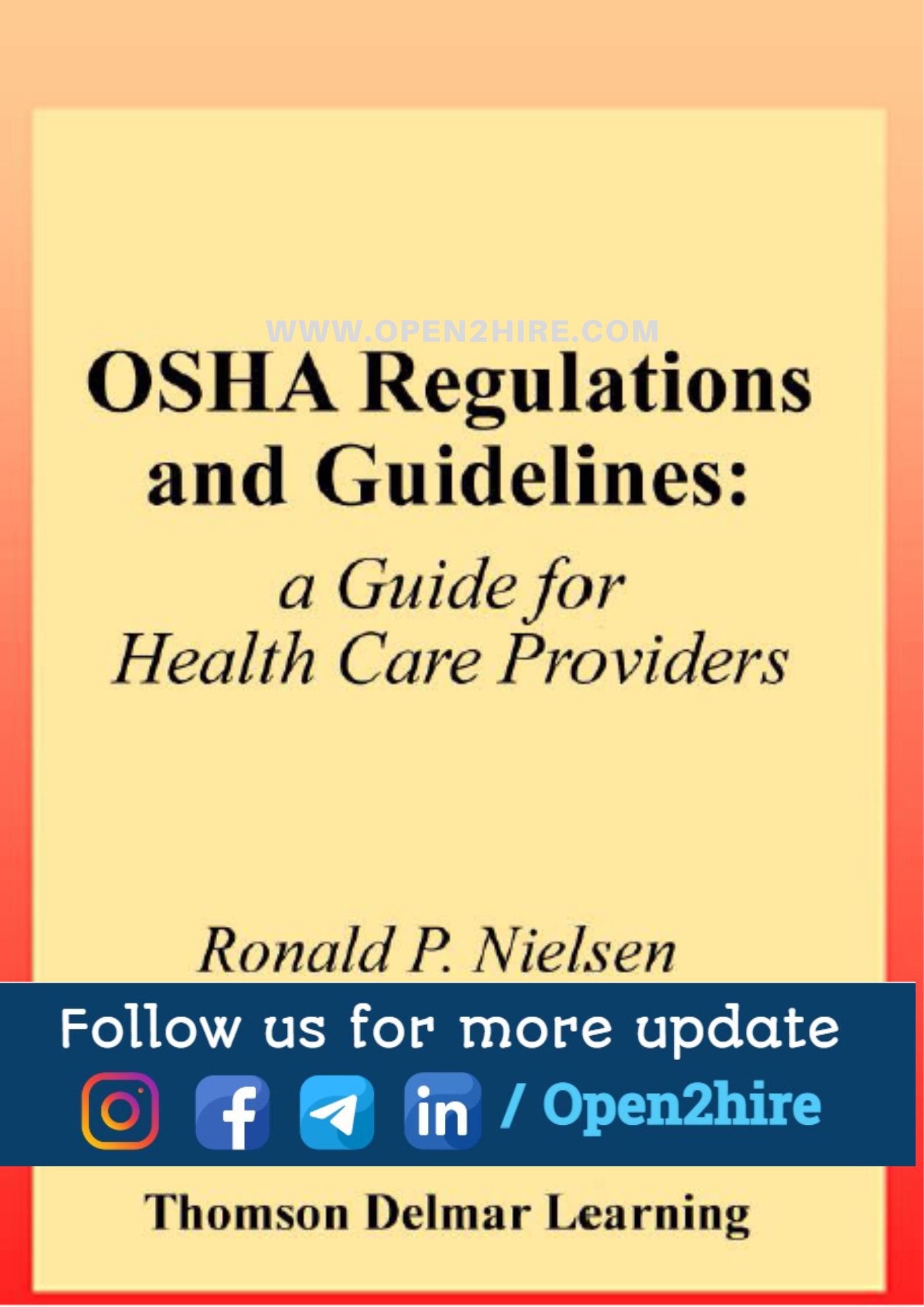OSHA Regulations and Guidelines for Health Care Providers
The federal government passed the Occupational Safety and Health Act (OSH Act) in 1970, making business and industry the first to be covered by uniform safety and health laws. Previously, each state had its own set of laws, which varied in terms of strictness and scope.

|
| OSHA Regulations and Guidelines for Health Care Providers |
OSHA made it mandatory for any private sector employer with ten or more employees to maintain a workplace free of recognised hazards when it was passed. OSHA initially did not cover state, county, or municipal employees, but the Act was later amended to allow states to create their own plans that included these workers. OSHA had to approve the state-adopted plans, which had to meet or exceed OSHA standards.
The Occupational Safety and Health Administration (OSHA) is in charge of enforcing OSHA standards and can levy fines for noncompliance. Employers have been fined and charged with criminal offences in several cases for failing to correct violations that resulted in employee injuries or death.
When a specific standard cannot be applied, OSHA may rely on the "general duty clause." According to this clause, "the employer shall provide to each of his/her employees employment and a place of employment that are free from recognised hazards that are causing or are likely to cause death or serious physical harm to his/her employees."
advertisement
The following standards are the most frequently cited OSHA violations in the health care industry, in order of frequency of citation:
1. Bloodborne Pathogens
2. Hazard Communication
3. Personal Protective Equipment
4. Lockout/Tagout
5. Formaldehyde Standard
6. Eye Wash Protection
7. Respirator Standard
8. Maintenance of the Log for Injuries and Illnesses
9. Electrical Systems—Wiring
10. Electrical Systems—General
These and other topics are covered in the guide.
Employee complaints are the most common reason for OSHA compliance health and safety officers to visit health care facilities (CHSO). This type of inspection occurs more frequently than scheduled inspections, in which the compliance health and safety officer arrives unannounced at the worksite.
The Contents of OSHA Regulations and Guidelines for Health Care Providers
Health Care Facility Safety
Indoor Air Quality
Recording and Reporting Occupational Injuries and illnesses
Access to Employee Exposure and Medical Records
Employee Emergency and Fire Evacuation Plans
Means of Egress and Fire Protection
Safety Color Code for Marking Physical Hazards
Abatement Verification
Health Care Security
Medical Services and First Aid
Tuberculosis Guidelines
Bloodborne Pathogens
Respirators
Infectious Diseases
Hazardous Medications
Hazardous Waste and Regulated Medical Waste
Personal Protective Equipment
Confined Spaces
Welding
Air Contaminants
Exposure to Laboratory Hazardous Chemicals.
advertisement
OSHA Regulations and Guidelines for Health Care Providers PDF
ReplyDelete